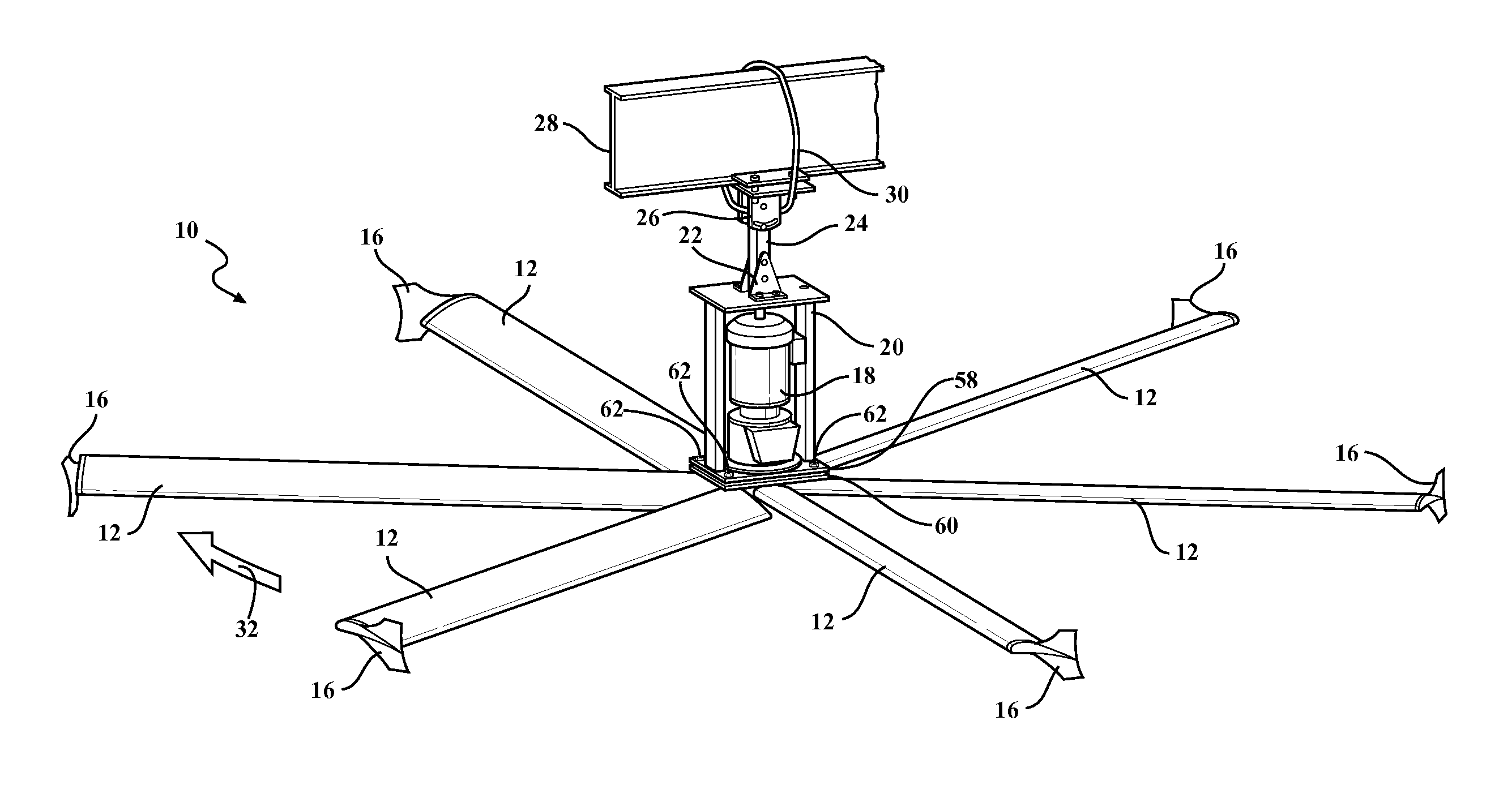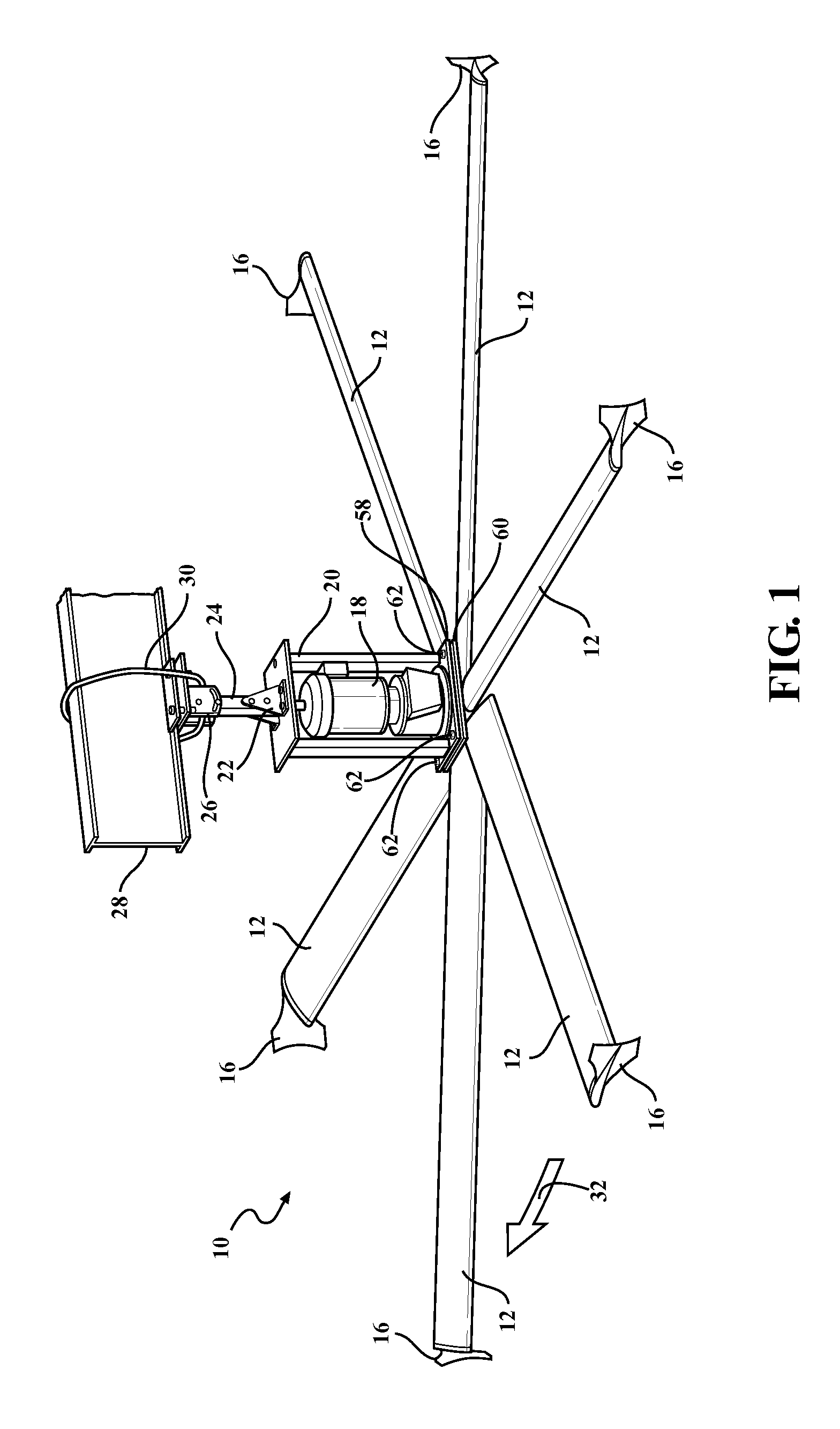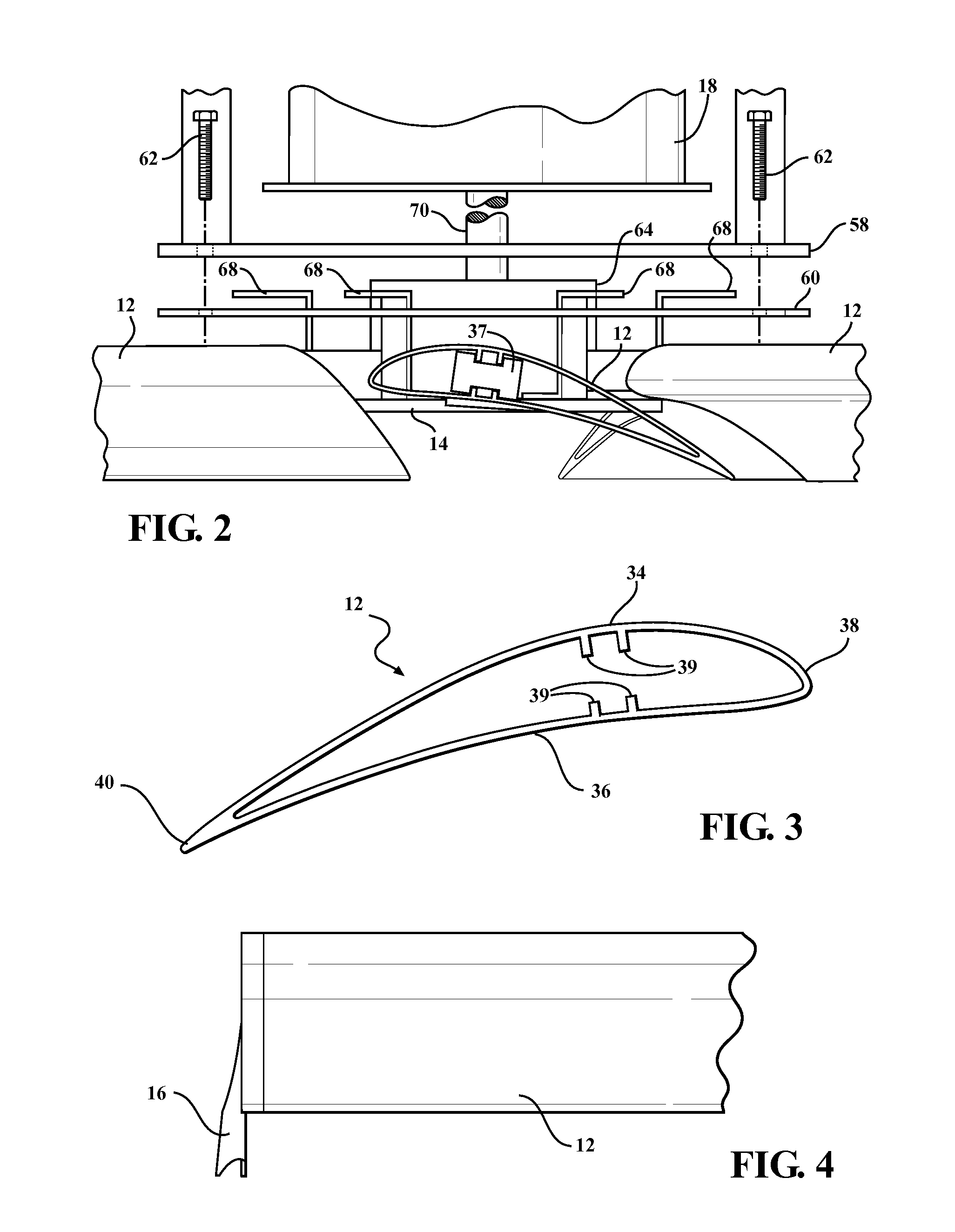High volume low speed fan
a low-speed, fan technology, applied in the direction of liquid fuel engines, marine propulsion, vessel construction, etc., can solve the problems of insufficient air circulation in large open areas, difficulty in circulating air in certain areas, and difficulty in interior climate control and air circulation, so as to increase air volume and circulation, increase efficiencies, and reduce the effect of weigh
- Summary
- Abstract
- Description
- Claims
- Application Information
AI Technical Summary
Benefits of technology
Problems solved by technology
Method used
Image
Examples
Embodiment Construction
[0028]In the following figures, like reference numerals are used to identify identical components in the various views and embodiments. The following example is meant to be illustrative of preferred embodiments for the invention. However, those skilled in the art will recognize various additional alternative embodiments.
[0029]Referring to FIGS. 1-13, an HVLS fan system 10 of the disclosure includes airfoils 12 coupled at one end to a central hub 14 and extending in the other direction to a distal end having a wingtip fence 16. The central hub 14 is coupled to a motor 18 for rotating the airfoils 12. The motor 18 is connected to a frame 20 which is coupled to a lower yoke 22 and an extension bar 24 which in turn is coupled to an upper yoke 26. The upper yoke 26 is illustrated as connected to a building member 28 such as a girder or other similar structures suitable for bearing the weight of the HVLS fan system. The extension bar 24 as a backup secures the HVLS fan system to the build...
PUM
 Login to View More
Login to View More Abstract
Description
Claims
Application Information
 Login to View More
Login to View More - R&D
- Intellectual Property
- Life Sciences
- Materials
- Tech Scout
- Unparalleled Data Quality
- Higher Quality Content
- 60% Fewer Hallucinations
Browse by: Latest US Patents, China's latest patents, Technical Efficacy Thesaurus, Application Domain, Technology Topic, Popular Technical Reports.
© 2025 PatSnap. All rights reserved.Legal|Privacy policy|Modern Slavery Act Transparency Statement|Sitemap|About US| Contact US: help@patsnap.com



